- Home
- Jane Austen
Emma (Barnes & Noble Classics Series)
Emma (Barnes & Noble Classics Series) Read online
Table of Contents
From the Pages of Emma
Title Page
Copyright Page
Jane Austen
The World of Jane Austen and Emma
Introduction
Notes to Introduction
Volume the First.
Chapter I.
Chapter II.
Chapter III.
Chapter IV.
Chapter V.
Chapter VI.
Chapter VII.
Chapter VIII.
Chapter IX.
Chapter X.
Chapter XI.
Chapter XII.
Chapter XIII.
Chapter XIV.
Chapter XV.
Chapter XVI.
Chapter XVII.
Chapter XVIII.
Volume the Second.
Chapter I.
Chapter II.
Chapter III.
Chapter IV.
Chapter V.
Chapter VI.
Chapter VII.
Chapter VIII.
Chapter IX.
Chapter X.
Chapter XI.
Chapter XII.
Chapter XIII.
Chapter XIV.
Chapter XV.
ChapterXVI.
Chapter XVII.
Chapter XVIII.
Volume the Third.
Chapter I.
Chapter II.
Chapter III.
Chapter IV.
Chapter V.
Chapter VI.
Chapter VII.
Chapter VIII.
Chapter IX.
Chapter X.
Chapter XI.
Chapter XII.
Chapter XIII.
Chapter XIV.
Chapter XV.
Chapter XVI.
Chapter XVII.
Chapter XVIII.
Chapter XIX.
Endnotes
Inspired by Emma
Comments & Questions
For Further Reading
From the Pages of Emma
Emma Woodhouse, handsome, clever, and rich, with a comfortable home and happy disposition, seemed to unite some of the best blessings of existence; and had lived nearly twenty-one years in the world with very little to distress or vex her.
(page 3)
Matrimony, as the origin of change, was always disagreeable.
(page 5)
“Success supposes endeavour.”
(page 9)
“The attentions of a certain person can hardly be among the tittle-tattle of Highbury yet. Hitherto I fancy you and I are the only people to whom his looks and manners have explained themselves.”
(page 48)
“One half of the world cannot understand the pleasures of the other.”
(page 73)
“I shall not be a poor old maid; and it is poverty only which makes celibacy contemptible to a generous public!”
(page 76)
There are people, who the more you do for them, the less they will do for themselves.
(page 82)
“The truth is, that in London it is always a sickly season. Nobody is healthy in London, nobody can be.”
(page 92)
It was a delightful visit;—perfect, in being much too short.
(page 97)
“There is, I believe, in many men, especially single men, such an inclination—such a passion for dining out; a dinner engagement is so high in the class of their pleasures, their employments, their dignities, almost their duties, that any thing gives way to it—and this must be the case with Mr. Elton: a most valuable, amiable, pleasing young man undoubtedly, and very much in love with Harriet; but still he cannot refuse an invitation, he must dine out wherever he is asked.”
(page 99)
Human nature is so well disposed towards those who are in interesting situations, that a young person, who either marries or dies, is sure of being kindly spoken of.
(page 164)
“I cannot separate Miss Fairfax and her complexion.”
(page 181)
Perfect happiness, even in memory, is not common.
(page 208)
“Business, you know, may bring money, but friendship hardly ever does.”
(page 263)
“If other children are at all like what I remember to have been myself, I should think five times the amount of what I have ever yet heard named as a salary on such occasions dearly earned.”
(page 346)
Seldom, very seldom, does complete truth belong to any human disclosure; seldom can it happen that something is not a little disguised, or a little mistaken.
(page 391)
“I always deserve the best treatment, because I never put up with any other.”
(page 428)
Published by Barnes & Noble Books 122 Fifth Avenue
New York, NY 10011
www.barnesandnoble.com/classics
Begun in 1814, Emma was first published in 1816.
Introduction, Notes, and For Further Reading
Copyright © 2004 by Steven Marcus.
Note on Jane Austen, The World of Jane Austen and Emma, Notes,
Inspired by Emma, Comments & Questions, and For Further Reading
Copyright © 2004 by Barnes & Noble, Inc.
All rights reserved. No part of this publication may be reproduced or transmitted in any form or by any means, electronic or mechanical, including photocopy, recording, or any information storage and retrieval system, without the prior written permission of the publisher.
Barnes & Noble Classics and the Barnes & Noble Classics colophon are trademarks of Barnes & Noble, Inc.
Emma
ISBN-13: 978-1-59308-152-2 ISBN-10: 1-59308-152-9
eISBN : 978-1-411-43210-9
LC Control Number 2004102194
Produced and Published in conjunction with:
Fine Creative Media, Inc.
322 Eighth Avenue
New York, NY 10001
Michael J. Fine, President and Publisher
Printed in the United States of America
QM
7 9 10 8 6
Jane Austen
The English novelist Jane Austen was born on December 16, 1775, the seventh of eight children, in the Parsonage House of Steventon, Hampshire, where she spent her first twenty-five years. During her relatively brief lifetime Austen witnessed political unrest, revolution, war, and industrialization, yet these momentous events are not the central or explicit subjects of her finely focused novels. Rather, Austen wrote out of her immediate experience: the world of the country gentry and middle-class professional and business families. Jane’s father, the Reverend George Austen, was the well-read country rector of Steventon, and her mother, Cassandra (née Leigh), was descended from a well-connected line of learned clergymen. By no means wealthy, the Austens nonetheless enjoyed a comfortable and socially respectable life.
Jane and her beloved elder (and only) sister, Cassandra, were schooled in Southampton and Reading for short periods, but most of their education took place at home. Private theatrical performances in the barn at Steventon complemented Jane’s studies of French, Italian, history, music, and eighteenth-century fiction. An avid reader from earliest childhood, she began writing at age twelve, no doubt encouraged by her highly literate and affectionate family. Indeed, family and writing were her great loves. Despite a momentary engagement in 1802, Jane Austen never married. Her first two extended narratives, “Elinor and Marianne” and “First Impressions,” were written while she was at Steventon but were never published in their original form.
Following her father’s retirement, Jan
e moved in 1801 with her parents and sister to Bath. That popular watering hole, removed from the country life Jane preferred, presented the observant young writer with a wealth of events and experiences that would later be put to good use in her novels. Austen moved to Southampton with her mother and sister after the death of her father in 1805. Several years later the three women settled in Chawton Cottage in Hampshire, where Austen resided until the end of her life. She welcomed her return to the countryside and, with it, there came a renewed artistic vigor that led to the revision of her early novels. Sense and Sensibility, a reworking of “Elinor and Marianne,” was published in 1811, followed by Pride and Prejudice, a reworking of “First Impressions,” two years later.
Austen completed three more novels (Mansfield Park, Emma, and Persuasion) in the Chawton sitting room. Productive and discreet, she was not widely known to be the author of her published work. All of her novels were published anonymously, including the posthumous appearance, thanks to her brother Henry, of Northanger Abbey and Persuasion.
The last years of Austen’s life were relatively quiet and comfortable. Her final, unfinished work, Sanditon, was put aside in the spring of 1817, when her health sharply declined and she was taken to Winchester for medical treatment of what appears to have been Addison’s disease or a form of lymphoma. Jane Austen died there on July 18, 1817, and is buried in Winchester Cathedral.
The World of Jane Austen and Emma
1775 The American Revolution begins in April. Jane Austen is born on December 16 in the Parsonage House in Steventon, Hampshire, England, the seventh of eight children (two girls and six boys).
1778 Frances (Fanny) Burney publishes Evelina, a seminal work in the development of the novel of manners.
1781 German philosopher Immanuel Kant publishes the Critique of Pure Reason.
1782 The American Revolution ends. Fanny Burney’s novel Cecilia is published.
1783 Cassandra and Jane Austen begin their formal education in Southampton, followed by study in Reading.
1788 King George III of England suffers his first attack of mental illness, leaving the country in a state of uncertainty and anxiety . George Gordon, Lord Byron, is born.
1789 George III recuperates. The French Revolution begins. William Blake’s Songs of Innocence is published.
1791 American political writer Thomas Paine publishes the first part of The Rights of Man.
1792 Percy Bysshe Shelley is born. Mary Wollstonecraft publishes A Vindication of the Rights of Woman.
1793 Europe is shocked by the execution of King Louis XVI of France and, some months later, his wife, Marie-Antoinette; the Reign of Terror begins. England declares war on France. Two of Austen’s brothers, Francis (1774-1865) and Charles (1779-1852), serve in the Royal Navy, but life in the countryside at Steventon remains relatively tranquil.
1795 Austen begins her first novel, “Elinor and Marianne,” written as letters (this early version is now lost); she will later revise the material as Sense and Sensibility. John Keats is born.
1796 -1797 Austen drafts a second novel, “First Impressions,” which was also never published; it will later be rewritten as Pride and Prejudice.
1798 Poets William Wordsworth and Samuel Taylor Coleridge publish Lyrical Ballads.
1801 Jane’s father, the Reverend George Austen, retires. He and his wife and two daughters leave the quiet country life of Steventon and move to the bustling, fashionable town of Bath.
1803 Austen’s novel “Susan” is accepted for publication but does not see the light of day. The manuscript is eventually returned by the publisher. It will be revised and released posthumously as Northanger Abbey. The United States buys Louisiana from France. Ralph Waldo Emerson is born.
1804 Napoleon crowns himself emperor of France. Spain declares war on Britain.
1805 Jane’s father dies. Jane and her mother and sister subsequently move to Southampton. Sir Walter Scott publishes The Lay of the Last Minstrel.
1809 After several years of moving about and short-term stays in various towns, the Austen women settle in Chawton Cottage in Hampshire; in the parlor of this house Austen writes her most famous works. Charles Darwin and Alfred, Lord Tennyson , are born.
1811 Austen begins Mansfield Park in February. In November Sense and Sensibility is published with the notation “By a Lady”; all of Austen’s subsequent novels are also brought out anonymously . George III is declared insane, and the Prince of Wales (the future King George IV) becomes regent.
1812 Fairy Tales by the Brothers Grimm and the first parts of Lord Byron’s Childe Harold are published. The United States declares war on Great Britain.
1813 Pride and Prejudice is published. Napoleon is exiled to Elba, and the Bourbons are restored to power.
1814 Mansfield Park is published.
1815 Napoleon is finally defeated at Waterloo.
1816 Emma is published. Charlotte Brontë is born.
1817 Austen begins the satiric novel Sanditon, but puts it aside because of declining health. She dies on July 18 in Winchester and is buried in Winchester Cathedral.
1818 Northanger Abbey and Persuasion are published under Jane Austen’s brother Henry’s supervision.
Introduction
Emma, first published in 1816, is Jane Austen’s masterpiece. It is also one of the greatest novels in the English language. There is, and has been for some time, general agreement on these conclusions, but that consensus has in recent years remained largely tacit and unspoken, since judgments of value and relative merit in literary studies have as a category become contested ground, a site of principled dubiety. Still, it is difficult to deny that Jane Austen is a writer of exceptional interest, perhaps even of singular gifts, and that her writing has been steadily regarded as special and distinctive from the time of its original appearance to the present.
Simple reflection yields the observation that the very conception of judgments—of people making differing and differential estimates of value, of better and worse, or good and bad or better, of right and wrong and neither, of each other and themselves—is a central concern and undeviating activity of and in Austen’s novels. The characters in these narratives are uninterruptedly involved in efforts to discriminate better from worse, and so is Jane Austen as narrator and architect of these fictions. Hence the contemporary student of literature is confronted with a paradox: In order to read Jane Austen appropriately, in order to achieve that willing suspension of disbelief that constitutes poetic faith and enables us to enter into fictive projections and imagined situations and problems as if they were, for the moment, “real” and we were experiencing them on a plane adjacent to that on which narrator and characters are assumed or proposed to exist—to do this we have to enter fully into the activities of judging, evaluating, and discriminating, as if they were as binding for us as they were for the author and her characters and their perplexities.
Another consideration along these lines has to do with the circumstance that, despite the clarity of line of its narrative, prose, and dialogue, Emma is an exceptionally dense and complex novel. So tightly woven is the intertexture of its thematic expressions, images, and representations that one can enter into it at almost any point or juncture in the narrative and begin to take up an analysis of the whole from there. It is almost as if no single strand or theme were exclusive of any of the others; each of them, by a strict economy of expressive means, leads to the center, which is at the same time a differentiated whole or totality. But that totality is equally neither stable nor self-identical but is continually shifting and permutating while we read, changing through each cumulative episode and detail, yet remaining somehow recognizably also itself.
What this complexity and variability require of us as readers, therefore, if we want to grasp what is taking place in this novel, is that we arouse our awareness and perceptiveness as collaborating intelligences to an intensity and subtlety of feeling, and a discrimination of existential distinctions and moral differences more focused a
nd unremitting than most of us bring to our own everyday experience. The dramatic representation of characters in motion, speech, inner reflection, and intercourse, and the judgments of value that are rendered on each—and that we in our turn must also imagine—are simultaneous and inseparable. They take place in the same behavior (whether as narrative, speech, or dialogue) which is by that very token the writing that we read.
This is in part what older literary critics meant when they insisted upon the existence of a moral function or purpose in literature, and in particular in the novel. That function is disclosed to a degree in how—in the cause we undertake of trying fully to understand a story—the novel prompts and even compels us to exercise, more actively and purposefully than we ordinarily do, intellect, feeling, self-conscious reflection, and judgmental discrimination. In reading better we momentarily improve ourselves.
Emma is an exemplary instantiation of these processes. How and in what ways, for the purposes of explanation, do we locate its achieved originality? We can single out three general categories that will serve to organize discussion.1. It is an extraordinary inward and detailed and coherent account of the circumstances, thoughts, and emotions—both conscious and otherwise—of a single complex character—in this instance a young woman of almost twenty-one.

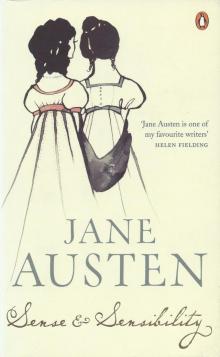 Sense and Sensibility
Sense and Sensibility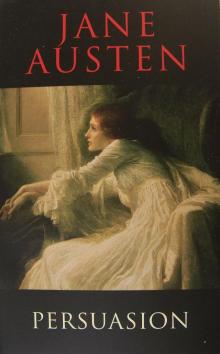 Persuasion
Persuasion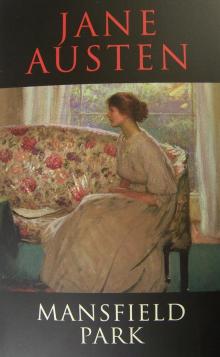 Mansfield Park
Mansfield Park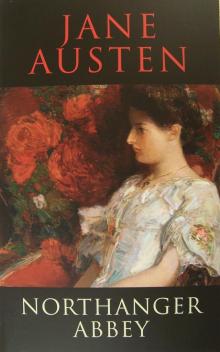 Northanger Abbey
Northanger Abbey Pride and Prejudice and Zombies
Pride and Prejudice and Zombies Pride and Prejudice
Pride and Prejudice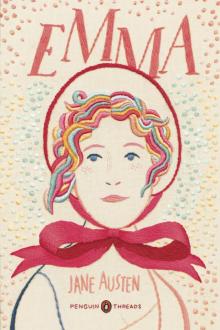 Emma
Emma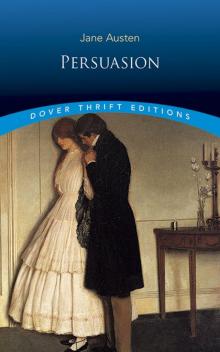 Persuasion (Dover Thrift Editions)
Persuasion (Dover Thrift Editions)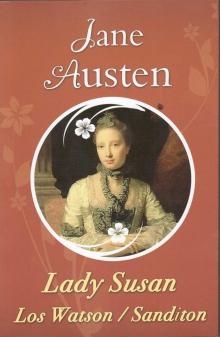 Lady Susan
Lady Susan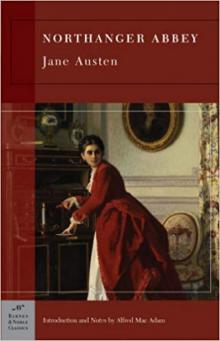 Northanger Abbey (Barnes & Noble Classics)
Northanger Abbey (Barnes & Noble Classics)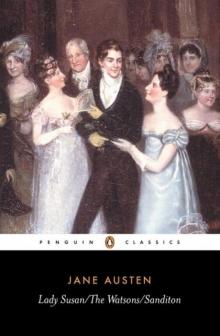 Lady Susan, the Watsons, Sanditon
Lady Susan, the Watsons, Sanditon Darcy Swipes Left
Darcy Swipes Left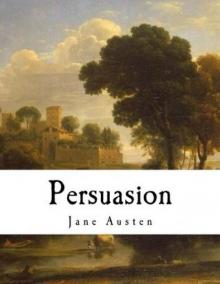 Persuasion: Jane Austen (The Complete Works)
Persuasion: Jane Austen (The Complete Works)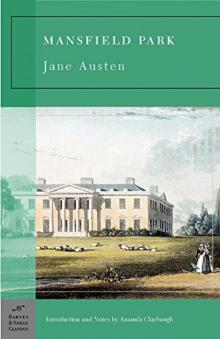 Mansfield Park (Barnes & Noble Classics Series)
Mansfield Park (Barnes & Noble Classics Series) Sense and Sensibility (Barnes & Noble Classics Series)
Sense and Sensibility (Barnes & Noble Classics Series)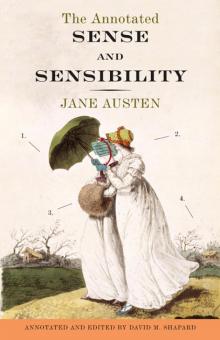 The Annotated Sense and Sensibility
The Annotated Sense and Sensibility Pride and Prejudice (Clandestine Classics)
Pride and Prejudice (Clandestine Classics)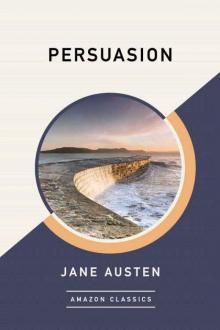 Persuasion (AmazonClassics Edition)
Persuasion (AmazonClassics Edition)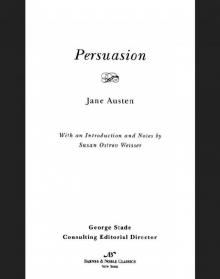 Persuasion (Barnes & Noble Classics Series)
Persuasion (Barnes & Noble Classics Series)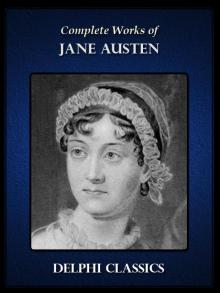 Complete Works of Jane Austen
Complete Works of Jane Austen The Watsons and Emma Watson
The Watsons and Emma Watson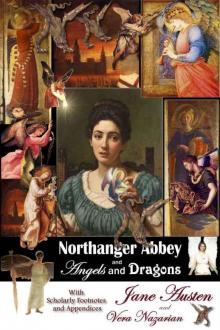 Northanger Abbey and Angels and Dragons
Northanger Abbey and Angels and Dragons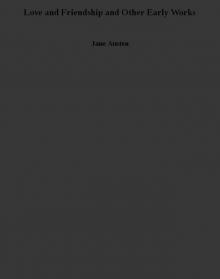 Love and Friendship and Other Early Works
Love and Friendship and Other Early Works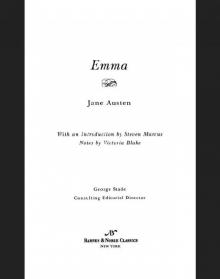 Emma (Barnes & Noble Classics Series)
Emma (Barnes & Noble Classics Series) Sanditon
Sanditon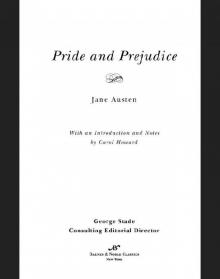 Pride and Prejudice (Barnes & Noble Classics Series)
Pride and Prejudice (Barnes & Noble Classics Series)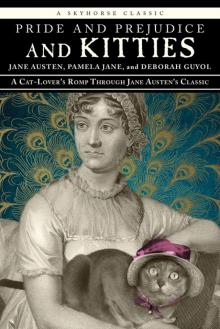 Pride and Prejudice and Kitties
Pride and Prejudice and Kitties The Annotated Northanger Abbey
The Annotated Northanger Abbey Oxford World’s Classics
Oxford World’s Classics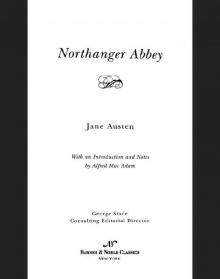 Northanger Abbey (Barnes & Noble Classics Series)
Northanger Abbey (Barnes & Noble Classics Series)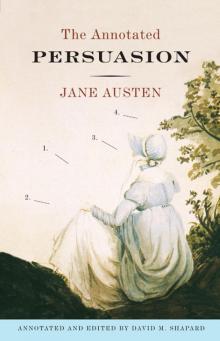 The Annotated Persuasion
The Annotated Persuasion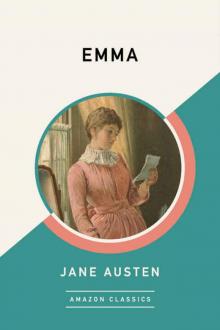 Emma (AmazonClassics Edition)
Emma (AmazonClassics Edition)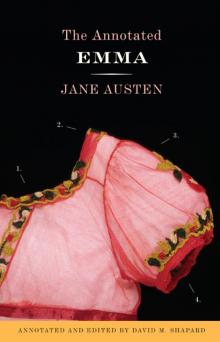 The Annotated Emma
The Annotated Emma The Annotated Mansfield Park
The Annotated Mansfield Park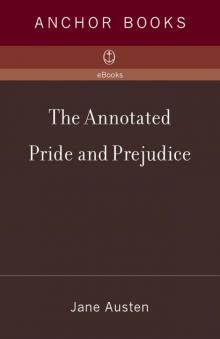 The Annotated Pride and Prejudice
The Annotated Pride and Prejudice